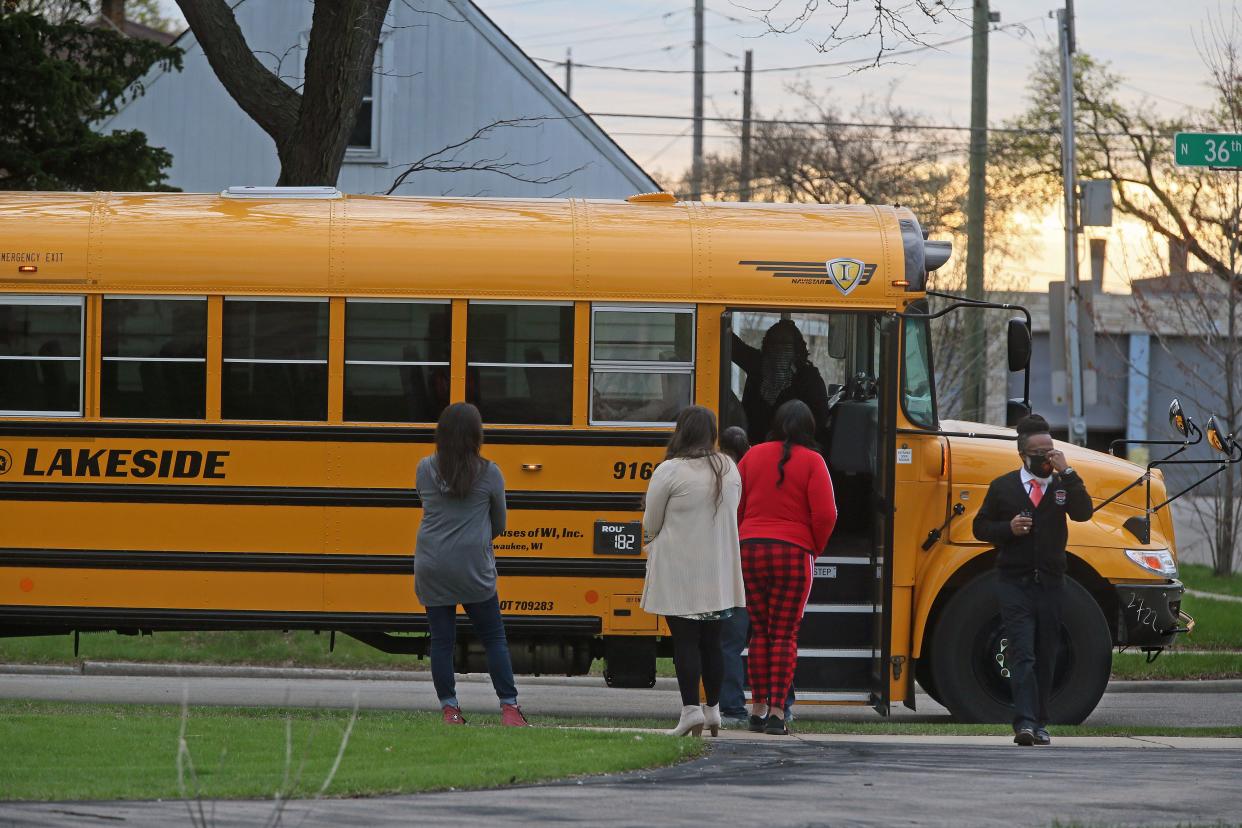Five things to know about how MPS performed on state evaluation

Milwaukee Public Schools, like all public school districts in the state, got a report card Tuesday from the state Department of Public Instruction.
The state Department of Public Instruction, the agency that oversees public education, produces annual report cards to judge the performance Wisconsin's public school districts and some private schools that receive state voucher funding.
Statewide, schools have seen academic standardized test scores climb somewhat in the last couple years, though they're still below pre-pandemic levels. More concerning, they've seen an alarming rise in chronic absenteeism with nearly a quarter of Wisconsin students missing at least 10% of school days in the most recent data.
Here are five things to know about the report card for MPS. The full report card can be found at dpi.wi.gov/accountability/report-cards.
MPS' report card rating improved, meeting state expectations
Unlike last year, MPS this year was among the districts that met or exceeded state expectations. DPI said it "meets expectations," giving the district three stars. Last year, MPS had two stars and met "few expectations."
Districts are graded on four areas: achievement on standardized tests; growth in performance on those tests over time; attendance and graduation; and the performance of students who scored lowest in the previous year. Each area is weighted differently for each district.
For districts with more students from low-income families, like Milwaukee, the report cards place a heavier emphasis on growth, as opposed to the most recent test scores and attendance. That's why MPS was able to improve its rating despite a worsening score for academics, attendance and graduation.
MPS academic achievement score dropped but test scores improved
Confusingly, MPS' report card score for academic achievement score dropped slightly even though test scores improved in the last school year.
That's because the report cards take into account three years of data. While last year's report card still included a year of data from before the pandemic, this year's report card was based entirely on post-pandemic scores.
MPS students, like most nationwide, are still not scoring as well as before the pandemic, though they have gradually improved since 2021.
"We are still seeing tremendous impacts from data impacted by the pandemic," said Melanie Stewart, MPS director of research, assessment & data.
MPS graduation rates improved, attendance worsened
Attendance and graduation rates on the report cards are delayed and based on data from the 2021-22 school year.
That was the first full year of in-person school after the 2020-21 school year was mostly taught remotely. The district was still closing individual schools temporarily that school year during COVID outbreaks.
MPS' four-year graduation rate improved slightly in 2021 for the first time since the pandemic, with about 65% of students completing high school in four years. That's still down from before the pandemic, when the rate was 69%.
Like in schools statewide, attendance was a growing problem. The 2021-22 attendance rate was 79%, down from about 87% before the pandemic.
MPS had an especially troubling rate of chronic absenteeism, with about 58% of students missing at least 10% of school days in the 2021-22 school year. That's up from about 37% before the pandemic.
Researchers have said it's possible that pandemic-related school closures and mental health challenges could have caused some students to feel disconnected from their schools. In a fall 2021 survey, about 52% of Wisconsin high school students said that in the past year they had significant problems with feeling very anxious, nervous, tense, scared or like something bad was going to happen.
MPS says attendance has improved more recently
In an interview Tuesday, Stewart said attendance has improved since the 2021-22 school year. So far this school year, she said, about 39% of students have been chronically absent.
Stewart said the attendance rate so far this school year is 86.3%.
"That's lots of hard work by lots of teachers, social workers, families and students making the turnaround and being in school," Stewart said.
MPS calls for state investment in teachers
MPS Legislative Policy Manager Chris Thiel said school districts would be able to improve report card metrics more quickly if state lawmakers took action — without waiting until the next budget cycle.
Thiel has argued that the state could draw on its budget surplus now to invest in the teaching workforce, for example by investing state funds to expand Wisconsin's donor-funded Teacher Pledge program, which pays tuition for students who pledge to work in Wisconsin schools.
"What we need continues to be professional educators who can come and help our students," he said. "If the state truly wants to move forward, the state's got to take action immediately."
Contact Rory Linnane at rory.linnane@jrn.com. Follow her on Twitter at @RoryLinnane.
This article originally appeared on Milwaukee Journal Sentinel: How MPS performed on 2023 Wisconsin DPI report card for Milwaukee

